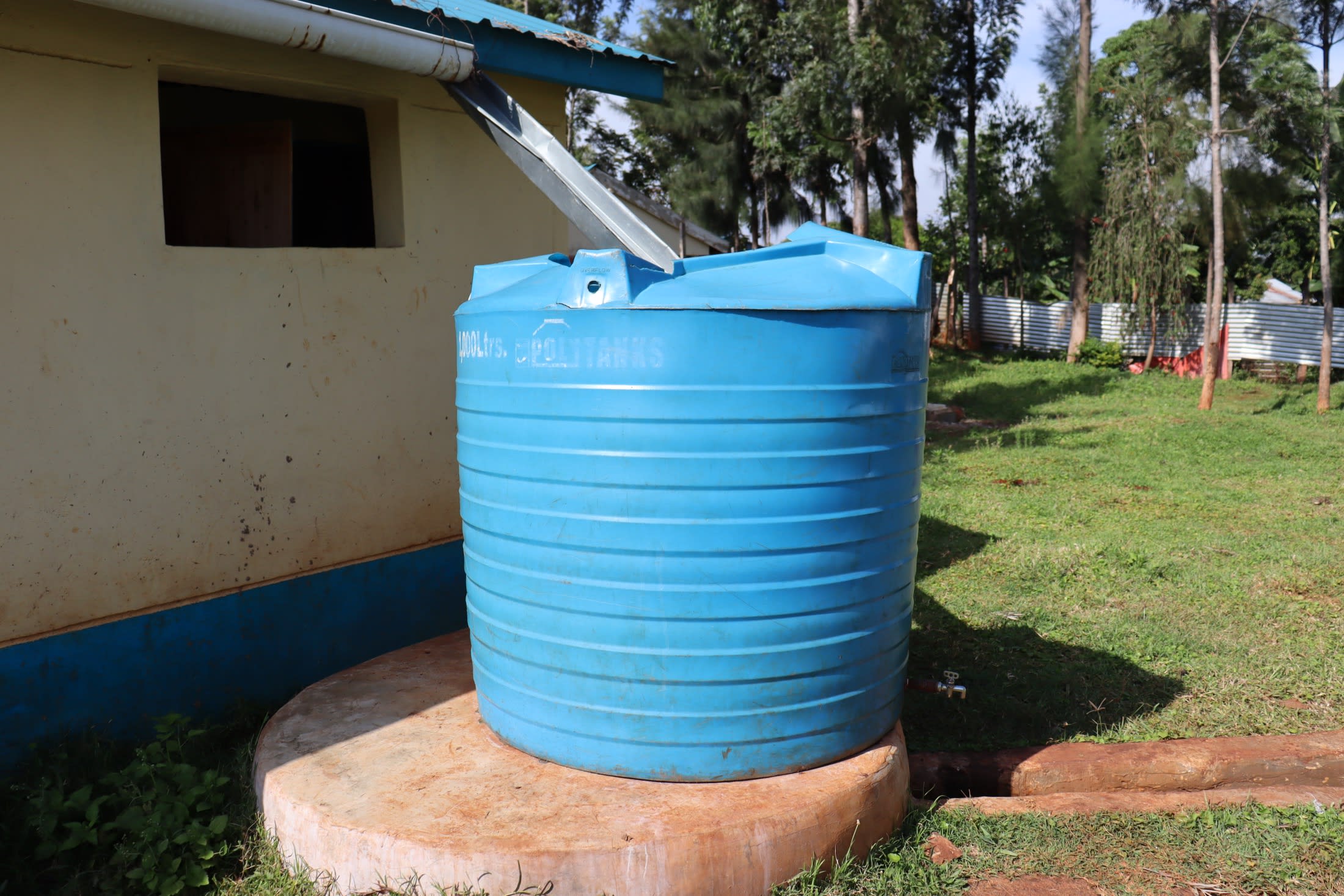There is never enough water at Simbi Secondary School, leaving the 272 students and staff thirsty and any projects that require water undone.
"There are times I have really felt very thirsty but could not access the water because it was locked due to rationing. This leaves me very frustrated, and I end up losing focus in class," said 16-year-old student Maureen G. (seen below).

There are several small plastic rain tanks on the school campus, but it is impossible for them to hold sufficient water to meet the daily demands of the school, so administrators must ration the water.

Every day, students fetch water from the various tanks during their mid-morning break and then again at lunchtime for drinking, cooking, cleaning, and watering the garden. But after lunch, the tanks are locked and off-limits to save as much water as possible for the next day.
Sadly, the rationing has led to cases of student vandalism of the tanks because they desperately need the water to drink or complete tasks yet are not allowed access to it.

During the dry season, when the tanks do not have extra water stored and do not refill, the school has to buy water from outside vendors, but this always presents problems.
First, the water collected comes from unknown sources; by consuming it, students and staff risk becoming ill with water-related illnesses. Many of them have reported repeated episodes of stomach pain and diarrhea, along with other serious ailments.
"The safety of the water at school is a question that cannot be fully addressed in depth, especially during the dry seasons. A few times I have had to treat myself for typhoid and amoeba, the most current one being at the beginning of the year," shared 33-year-old teacher Mr. Gavole, standing next to one of the current rain tanks below.

Secondly, the cost of purchasing the water eats into an already-slim school budget, stealing from other valuable programs needed for its students to succeed.
The school is doing remarkably well with its little water, trying its best to maintain its agricultural program with a school garden. Still, there is only so much to go around, and eventually, things suffer. In the long run, this means that students also suffer academically, putting them behind their peers and limiting their chances for a bright future.

With the installation of two huge rain tanks on the campus, a consistent, abundant amount of water can be available at all times, even through the dry season. And this will mean students never have to go thirsty, and the school administration can invest the money wasted on water delivery back into the programs that will help students get ahead and flourish.
What We Can Do:
Two Rain Tanks
Two 75,000-liter rainwater catchment tanks will help alleviate the water crisis at this school. The school will help collect the needed construction materials such as sand, bricks, rocks, and water for mixing cement. We will complement their materials by providing an expert team of artisans, tools, hardware, and the guttering system. Once finished, these tanks will begin catching rainfall that will be used by the school's students and staff for drinking, handwashing, cooking, cleaning, and much more.
We and the school strongly believe that all of these components will work together to improve standards at this school, which will lead to better student academic performance and help to unlock the potential for these students to live better, healthier lives.
Handwashing Stations
The student health club will oversee the two new handwashing stations we will provide, and make sure they are kept clean and in working condition. The club leaders will fill the handwashing stations with water daily and make sure they are always supplied with a cleaning agent such as soap or ash.
VIP Latrines
Two triple-door latrine blocks will be constructed with local materials that the school will help gather—one block for girls and one for boys. All of these new latrines will have cement floors that are designed to be easy to use and clean. And with two rain tanks right on school property, there should be enough water to keep them clean.
Training on Health, Hygiene, COVID-19, and More
We will hold a one-day intensive training session with students and teachers. This training will cover a wide range of topics including: COVID-19 symptoms, transmission routes, and prevention; personal and environmental hygiene; and the operation and maintenance of the rain tanks, latrines, and handwashing stations. There will be a special emphasis on handwashing.
Our team of facilitators will use a variety of methods to train, including participatory hygiene and sanitation transformation, and asset-based community development. We will initiate a student health club, which will prepare students to lead other pupils into healthy habits at school and at home. We will also lead lectures, group discussions, and provide illustrative handouts to teach health topics and ways to promote good hygiene practices within the school, like handwashing and water treatment. We will then conduct a series of follow-up trainings before transitioning to our regularly scheduled support visits throughout the year.

 Rainwater Catchment
Rainwater Catchment
 Rehabilitation Project
Rehabilitation Project


















